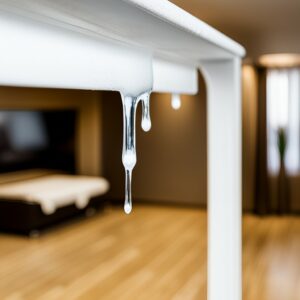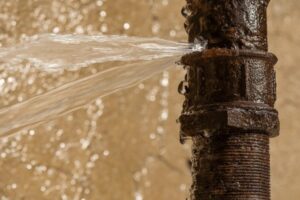The onset of winter brings about a charm, with picturesque snowfalls and the warmth of the holiday season. However, amid the beauty lies a potential disaster that can wreak havoc on your home—frozen pipes. For homeowners and DIY enthusiasts, understanding how to deal with frozen pipes is essential to maintaining a comfortable and functioning household. In this comprehensive blog post, Showers to You delves into the intricacies of thawing and preventing frozen pipes, ensuring you’re well-prepared to tackle this winter woe head-on.
The Perils of Frozen Pipes
Freezing pipes pose a dual threat. Firstly, as water freezes, it expands within the pipes. This leads to an increase in pressure that can cause them to burst. In turn, this can result in extensive water damage, ranging from structural issues to damage to personal belongings. Secondly, frozen pipes disrupt your water supply, impacting your daily routines and access to necessary resources.
Identifying Frozen Pipes
One of the tell tale signs of a frozen pipe is the absence of water flow from a particular tap despite all other fixtures in the house functioning properly. You might notice a frosty or ice-coated pipe, though this isn’t always true. Other indicators include strange odours or noises when running water that precede or follow a period of no flow.
Thawing Frozen Pipes Safely
When confronted with frozen pipes, the immediate goal is to thaw them out without causing any further damage. Here’s how to do it safely and effectively.
Turn on the Tap
Start by turning on the tap to identify which pipe is frozen. By opening the affected tap, you’ll provide a path for water and relieve pressure in the system. Check everything from your Bath Fillers to your Basin Taps.
Apply Heat
There are several methods to apply heat to the frozen section safely. For exposed pipes, you can use an electric heating pad wrapped around the pipe, an electric hair dryer, or a portable space heater if the frozen pipe is in a safe area and you’re not at risk of electrocution or fire hazards.
For Concealed Pipes
If you’re dealing with concealed pipes, it’s best to increase the ambient temperature in the rooms where the pipes are located. Open Storage Units to allow heat to reach uninsulated pipes under Kitchen Sinks and appliances. If you can access the walls, you can start by turning up the home’s heating system, such as Underfloor Heating, using an infrared lamp, or cutting into the wall to direct warm air onto the affected area.
Patience is Key
Remember, patience is a virtue when thawing out pipes. Rushing the process with an open flame, for example, can be incredibly dangerous and risk further complications. Over time, a slow but steady heat application will allow the ice to thaw gradually and the water to flow unimpeded.
Preventing Frozen Pipes
While knowing how to thaw pipes is crucial, preventing them from freezing in the first place is the best defence. Here are some preventive measures.
Insulate Exposed Pipes
Insulate pipes in unheated areas of your home, such as garages and attics. You can use pipe sleeves or even wrap them with newspaper as an emergency measure.
Seal Air Leaks
The more significant the air leak, the higher the likelihood of frozen pipes. Seal any cracks or holes in your home’s exterior with caulk or insulation to keep the cold and warm air out.
Let Taps Drip
On freezing nights, a slow trickle of water from your tap can relieve pressure in the system and reduce the risk of the pipe freezing. For example, leave your Kitchen Mixer Tap trickling overnight if your pipes run into your kitchen. Never turn on the hot taps, as this could collapse the pipes.
Keep It Cosy
Maintain a consistent, warm temperature in your home, even when you’re away. If you plan to leave for an extended period during winter, set your thermostat no lower than 12°C to prevent freezing.
Going the Extra Mile: Advanced Prevention Tactics
For those in regions where harsh winters are the norm, advanced prevention tactics can provide added security for your pipes.
Install Pipe Heating Cables
Pipe heating cables are an excellent way to keep pipes from freezing. They can be installed on various pipe materials and are thermostatically controlled to only turn on when the temperature approaches freezing.
Consider a Thermostat with a Freeze Alarm
A thermostat with a freeze alarm can alert you if the temperature in your home drops too low so you can take action before the pipes freeze. Check out the Redroom Wifi Enabled Thermostat Control with a frost-protection system.
Winterise Garden Tap and Sprinkler Systems
Disconnect garden hoses and, if possible, use an indoor valve to shut off and drain water from pipes leading to outside taps. Sprinkler systems should also be winterised to avoid potential ruptures.
Dealing with Burst Pipes
 Sometimes, despite your best efforts, a pipe will burst. When this happens, it’s essential to act quickly to minimise damage.
Sometimes, despite your best efforts, a pipe will burst. When this happens, it’s essential to act quickly to minimise damage.
Shut Off the Water Supply
Locate your home’s main water shut-off valve and turn it off immediately. This will stop the flow of water and prevent further flooding.
Electricity Concerns
There’s a double risk if the burst pipe is near electrical appliances or outlets. Turn off the electricity if water is leaking near any sources of electricity to prevent the risk of electrocution or short circuits.
Clean Up
Begin the process of cleaning up the water to prevent mould and mildew. Use a wet-dry vacuum to remove standing water and place fans in the affected area to promote air circulation and drying.
Professional Assistance
In many cases, you’ll need the expertise of a professional to repair the burst pipe, mainly if it’s part of your home’s central water system. Water damage restoration specialists can also help with the clean-up.
Conclusion
Frozen pipes are a common hazard during winter, and learning how to deal with them is an essential skill for any homeowner. By taking steps to thaw frozen pipes safely, preventing them from freezing in the first place, and knowing how to react if a pipe bursts, you can maintain a comfortable and functioning home throughout the harshest of winters.
Remember, preparation is critical. Take the time now to make simple adjustments and be proactive in safeguarding your home against the perils of frozen pipes. Your efforts will protect your property and ensure peace of mind when the mercury drops.